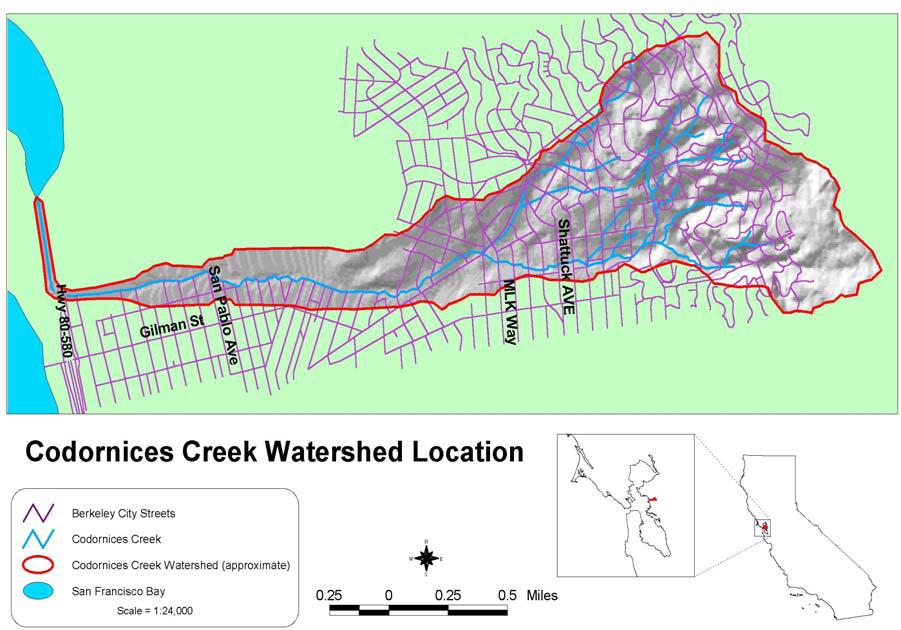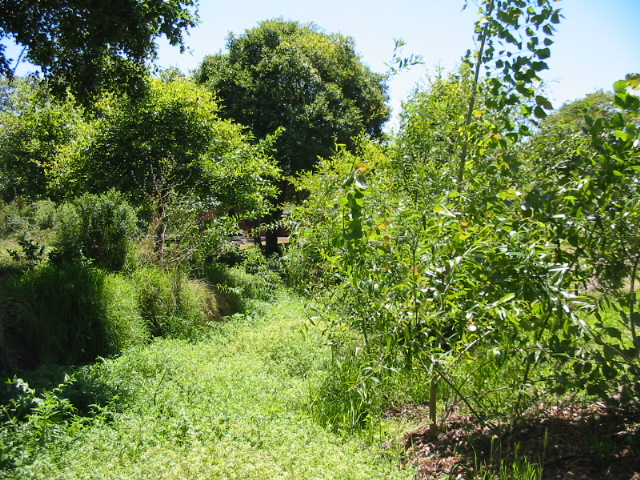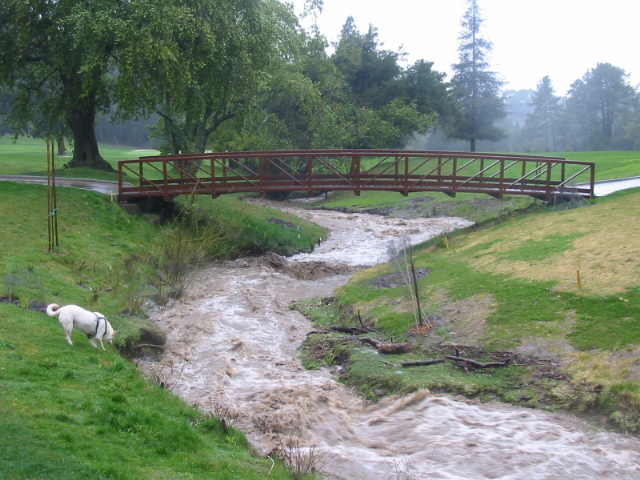
by Austin | Mar 14, 2019 | Projects
OSRS rent max main opportunities abound. However, this is
something that will prove to be highly dependent upon where you go. In other
words, if you are serious about renting an OSRS account with all the features
and trimmings, you will want to make sure you are going to the right place.
When you get what you want from a reliable resource, the benefits are going to
be numerous and endlessly impressive. This is a fantastic game for a number of
reasons. You have probably heard this for yourself, which is why you have been
seeking out OSRS rental opportunities in the first place.
If you are seeking such a thing out, there is no question that you have come to the right place. There has never been a better time than now to take advantage of everything this opportunity has to offer. Imagine being able to experience the best of what Old School RuneScape has to offer. Imagine having the resources necessary to experience the game as you see fit. If both of those things sound good to you, then take advantage of the opportunity to learn more about this incredible OSRS rent max main offer has to offer. This can prove to be the best way to enjoy everything Old School RuneScape has to offer.
What This OSRS Rent Max Main Opportunity Means
There is much to enjoy what Old School RuneScape brings to
the table. This is an MMORPG with a strong reputation for providing complex
management and ongoing challenges in a vast world. Whether you want to explore
and build up your character to ridiculous heights, or if you would rather go up
against some of the best players in the world, Old School RuneScape will
accommodate you in impressive fashion.
At the same time, there is more than one way to enjoy the game. This is where the OSRS rent max main opportunity comes up. With this, you don’t have to start and build an account from scratch. You can take advantage of the chance to play the game with a full range of resources at your disposal. This means being able to absolutely dominate the proceedings right out of the gate. Obviously, this is a great way to learn as much about the game as possible. You will have something you will be able to rely upon in the most straightforward fashion possible.
Ready to find out what you have to gain from this OSRS rent max main special?

by Austin | Mar 5, 2019 | Projects
Here’s all the inside information you need to know to get buy a legitimate Old School RuneScape (OSRS) account today!
RunesScape, a MMORPG that launched 18 years ago, has enjoyed
the kind of longevity that almost no other video game on the planet has.
According to the developers of this title, well over 200
million accounts have been setup on RuneScape over the past nearly two decades
and the game shows almost no sign of slowing down as far as popularity is
concerned.
Taking place in a medieval fantasy world that is divided
into numerous kingdoms, different regions, and major cities as well as smaller
towns and communities – complete with player run political factions, armies,
and militias – players have an opportunity to build the kind of character they
want to play through a complex system of gameplay mechanics complete with
combat, magic, and crafting.
New players are diving headfirst into the world of RuneScape
on a daily basis but many of them are discovering that when faced with veterans
that might have been playing for 18 years they are at a significant
disadvantage.
Those veteran players have amazing resources, incredible
weapons, advanced magic capabilities, and more – not to mention stockpiles of
gold that allow them to do most anything they want in the game without a second
thought.
That’s why so many people choose to buy Old School RuneScape accounts when they are getting started.
Why Buy A RuneScape Account In The First Place?
Starting a brand-new account or character on RuneScape is
one of the most challenging things you will ever do in a videogame.
You’ll be starting from scratch against players that have a
decade or more experience under their belts and all the spoils of digital war
as well.
By making the decision to buy cheap Old School RuneScape gold and accounts you are able to give yourself an immediate advantage against the competition, leveling the playing field while at the same time opening up opportunities to create the kind of character you’ve always wanted without having to grind away or years – losing to veterans time and time again along the way.
What To Look For In A RuneScape Account For Sale
It’s important that you look for Old School RuneScape (OSRS)
accounts for sale from legitimate providers only.
The developers behind RuneScape have implemented a
“recovery” method that allows almost anyone and everyone to seize back control
of an account they used in the past, and if you buy Old School RuneScape
accounts from less than legitimate services you might find yourself in
possession of one of these accounts one day and find it gone the very next.
Providers with a reputation for secure trading only, low
price guarantees, and 30 minute or less delivery are the kinds of providers you
want to work with. This is especially true when you are looking to buy cheap
Old School RuneScape gold or accounts, resources that you’re going to use to
enjoy playing RuneScape rather than going through the grinding leveling process
newbies would have otherwise had to put themselves through.
At the end of the day, as long as you are sure you are
working with legitimate providers – providers with sterling silver reputations
in the OSRS community, providers that can guarantee you’ll get the kind of
upgraded account and all the gold you’ll need for a fair price – you have
nothing to worry about!
by Austin | Feb 11, 2018 | Projects
Creek and watershed restoration not only improves the environment for wildlife such as birds and fish, but also gives people a chance to have meaningful contact with nature in the urban context, reminding us that we all benefit from the improvement and protection of our natural resources.
PROJECT LIST
Wildcat Creek Restoration Action Plan (WRAP) | 2010
Rheem Creek at Contra Costa College | 2008
Codornices Creek Watershed Restoration Action Plan, Phase II | 2008
Codornices Creek Salmonid Restoration | 2008
Wildcat Creek at Rumrill Blvd | 2006
Wildcat Creek at Church Lane, San Pablo | 2005
Pinole Creek Watershed Vision Plan | 2004
Pinole Creek Watershed Vision Plan | 2004
Pinole Creek Watershed Vision Plan | 2004
Alhambra Creek at Martinez Adult Education | 2004
Peralta Creek at Cesar Chavez Park, Oakland | 2003
Wildcat Creek at Tilden Golf Course, Berkeley | 2003
Baxter Creek at Booker T. Anderson Park, Richmond | 2000
Wildcat Creek at 23rd Street, San Pablo | 2000
Lower Wildcat Creek, North Richmond | 2000
Village Creek, Albany | 1998
Upper Baxter Creek at Poinsett Park, El Cerrito | 1996
Blackberry Creek, Thousand Oaks School, Berkeley | 1998
PROJECT DETAILS
Wildcat Creek at Rumrill Blvd., San Pablo, CA
In fall 2006, UCC implemented the first phase of a major restoration project on Wildcat Creek in the City of San Pablo. This 500 foot project included realigning the channel to increase sinuosity, re-establishing a functioning floodplain, and excavating excess sediment from the active channel. With assistance from the East Bay Conservation Corps and volunteer students from Richmond High School, UCC will continue to revegetate the site with native riparian plants.
This project is part of the Wildcat-San Pablo Creeks Watershed Restoration Action Plan and Priority Projects (WCSP-WRAPP), the main goal of which is to develop a community- and City-supported plan to reduce flood damages in the City of San Pablo while preserving the natural qualities of its creeks. Our team of East Bay water experts is completing its assessment of existing physical, hydrologic, and biological conditions along Wildcat Creek.
We are now exploring site-specific action alternatives for possible future implementation by the US Army Corps of Engineers. These potential alternatives—including culvert removals, floodwater detention, and in-stream channel modifications—will be presented to San Pablo residents in a series of community meetings. The Watershed Council and the City of San Pablo will make the final approvals regarding the contents of the Watershed Restoration Action Plan due in February 2007.
Alhambra Creek at Martinez Adult Education, Martinez. Urban Creeks Council worked with the Muir Heritage Land Trust, Martinez Unified School District, City of Martinez, Friends of Alhambra Creek, and the Alhambra Creek Watershed Planning Group to restore two sections of Alhambra creek at the Martinez Alternative Education Campus. The restoration, completed in fall 2004, reduced erosion by replacing failed gabions and bioengineering the banks, improved riparian habitat by the removal of invasive plants and replacement with native riparian plants, improved fish habitat for the population of steelhead/rainbow trout. A trail now provides public access to the creek, and riparian vegetation is establishing. The students at the school have created a creekside garden and a watershed based mural. They will continue to be involved with the monitoring of this project. This project was funded by the Department of Water Resources Urban Streams Restoration Program.
View this project’s final report!

Codornices Creek, Berkeley.
Codornices Creek Watershed Restoration Action Plan (CCWRAP), Berkeley.
This project seeks to improve habitat and migration for threatened steelhead/rainbow trout (Oncorhynchus mykiss) in Codornices Creek through watershed planning, in-the-ground projects, and community involvement.
The first phase of this project was conducted from 2001-2004 and developed a written Codornices Creek Watershed Restoration Action Plan (2004). Data collected on existing water quality and stream conditions was used to identify priority projects that would improve habitat and stream health. Conceptual designs developed for the identified priority projects were develped and modeled by FarWest Restoration Engineering to analyze potential hydraulic impacts. The results of this work are presented in a 2005 report.
Currently UCC is working on CCWRAP-Phase II. This phase works to implement recommendations of the 2004 CCWRAP Plan in order to improve habitat and migration for threatened steelhead/rainbow trout in Codornices Creek. Project components include implementation of identified priority restoration projects; monitoring of existing fish population, habitat, and water quality through electrofishing surveys, spawning surveys and outmigrant trapping; pebble counts, residual pool depth surveys, macrobenthic invertebrate surveys, and weekly water quality testing; and working with creekside property owners to create “fish-friendly” yards.
Step-pools and bank stabilization measures were designed for a 1000 foot stretch of Codornices Creek extending downstream from the Albina Avenue crossing. The design removes the current upstream fish passage barrier to allow salmonids of all life stages to migrate upstream for spawning, and improves spawning gravel throughout the reach by minimizing sedimentation from the largest erosion site identified in the watershed.
Implementation of the priority project at Albina Avenue is scheduled for Summer 2007.
Funded by CALFED Watershed Program and CA State Water Resources Control Board.
Click here to get the latest updates and learn more about this exciting project!
Updated! Monitoring report on fish population, fish habitat, and water quality data collected 2005-2006.
Codornices Creek Salmonid Restoration
This UCC project has three main components; 1) development of the Codornices Creek Watershed Council with a paid Coordinator to work with stakeholders, 2.) development of construction documents for restoration of Codornices Creek between 2nd Street and the Union Pacific Railroad; and,
3.) development of monitoring plan for Codornices Creek and Urban Fishery Restoration Manual for use in measuring the impact of restoration projects within the watershed.
This grant is funded by the San Francisco Bay Salmonid Habitat Restoration Fund and will be complete June 2007.
Peralta Creek at Cesar Chavez Park, Oakland.
In 2002, this section of creek was degraded and virtually forgotten. The intent of the design was to improve the natural function of the creek, attract wildlife, reintroduce native flora to the site, and create a more community-oriented space for the schoolchildren and residents that pass through the park every day.
The installation of the design in summer 2003 removed a faulty and dangerous bypass culvert, re-graded the banks, replaced an old bridge for a safer, crime-deterrent design, and removed extensive non-native vegetation such as Acacia and Eucalyptus trees. There is now a decomposed-granite path running next to the creek, willow trees growing along the toe of the banks, and native grasses and wildflowers blooming throughout. The native species that have been spotted since the project was installed include Pacific Chorus Frogs, white egrets, mallards, and raptors.
Volunteer stewardship continues at the site with supplemental native planting days and trash cleanup. This site is also featured in the City of Oakland’s Creek to Bay Day each September.
This project was funded by the Department of Water Resources.
Wildcat Creek at Church Lane, San Pablo.
Construction Phase, Summer 2006
In partnership with the City of San Pablo, UCC removed failed walls and non-native species from unstable and eroding banks. A cross-vane weir was constructed in the channel to redirect energy to the center of the channel instead of the banks, to reduce erosion and to provide pool habitat for fish and other fauna. The banks were stabilized with willow and cottonwood cuttings, native grasses and wildflowers, and brush layering and brush mattress soil bioengineering techniques. This project will not only reduce erosion, but also create important habitat for birds and the population of rainbow trout/steelhead in Wildcat Creek.
This project will also beautify downtown San Pablo, with benefits for local businesses and residents. The Senior Center on the left bank enjoys a new pathway planted with native plants and with new viewpoints to the creek with benches, and a mural is painted on the culvert wall upstream.
Completed Projects
Lower Codornices Creek, Berkeley. In 1994, approximately 500 feet of creek was daylighted and restored in conjunction with the development of an adjacent commercial building. Planted with native willows, dogwoods, and alders, the creek is maintained by a regular crew of volunteers. In 1997, UCC restored a contiguous stretch of creek just downstream. The banks were replanted and stabilized using soil-bioengineering techniques, and sinuosity was restored to the channel. (Funded by CA Department of Water Resources, Urban Stream Restoration Program.)
Pinole Creek Watershed Vision Plan and Lower Creek Restoration Plan, Pinole. With funding from the Coastal Conservancy, the Urban Creeks Council, Pinole Redevelopment Agency, Contra Costa Flood Control District, and Friends of Pinole Creek Watershed partnered to develop two plans. One is a broad-based vision for the entire watershed; the other is a restoration concept for the Pinole Creek flood control channel (from Interstate 80 to San Pablo Bay). The Vision Plan was developed through a consensus-based community process and included the participation of a diverse set of stakeholders throughout the watershed. The flood control channel restoration design will be submitted to the Army Corps of Engineers for potential implementation under the Section 1135 program, which allows the Corps to revisit and restore prior projects that have had detrimental resource impacts.

Baxter Creek
Baxter Creek at Booker T. Anderson, Jr. Park, Richmond. In 2000, a 900-lineal-foot reach of degraded stream flowing through a well-used city park was restored by regrading the channel and increasing its sinuosity. The banks were revegetated using native willow and cottonwood cuttings and close to 100 native trees and shrubs from container stock. Labor was provided by the East Bay Conservation Corps, under the supervision of UCC. (Funded by CA Department of Water Resources, Urban Stream Restoration Program; CA Coastal Conservancy; San Francisco Foundation)

Wildcat Creek at Tilden Park, supervised by Bhodi the dog. This photo shows the Tilden project performing in the winter storms of 2004.
Wildcat Creek at Tilden Golf Course, Berkeley. In fall-winter 2002, UCC collaborated on the restoration of a 700 foot stretch of Wildcat Creek at the Tilden Golf Course. UCC performed the duties of project coordinator, project management, and supervision for implementing the dam removal and channel redesign. The project’s restoration design was provided by the Waterways Restoration Institute, a sister nonprofit to UCC. Six failing concrete check dams were removed along the reach, and the banks were restabilized to a 2:1 slope. Labor was provided by the East Bay Conservation Corps, and partners included Tilden Golf Course and Park staff, the East Bay Regional Parks District, and the American Golf Corporation. Funding provided by the Department of Water Resources.
Wildcat Creek at 23rd Street, San Pablo. In 2000, a 350-lineal-foot section of degraded stream was restored, and failing concrete banks were stabilized using soil-bioengineering techniques (brush layering). Native riparian trees, willows, and cottonwood cuttings were planted, and a trail was graded along one bank. Labor was provided by the East Bay Conservation Corps, under the supervision of UCC. (Funded by CA Department of Water Resources, Urban Stream Restoration Program)
Lower Wildcat Creek, North Richmond. In 2000, this alternative flood-control channel was reconfigured by deepening the existing low-flow channel and restoring proper functioning to 5000 feet of stream. The banks were replanted with native willows and cottonwoods. Labor was provided by the East Bay Conservation Corps, under the supervision of UCC.
Village Creek, Albany. In 1998, approximately 900 lineal feet of creek was daylighted (removed from an underground pipe and brought above ground) and planted with native willow, cottonwood, dogwood, and ninebark cuttings as well as alders, big leaf maple, and other native trees and shrubs from container stock. Labor was provided by the East Bay Conservation Corps, under the supervision of UCC.
Upper Baxter Creek, Poinsett Park, El Cerrito. In 1996, a 250-lineal-foot reach of creek was daylighted as an alternative to an expensive storm drain repair project. Due to the site’s steep slopes, the creek was designed to have a “step/pool” structure. It was planted with native willow, dogwood, and currant cuttings, as well as alders, big leaf maples, and other native trees. Labor was provided by the East Bay Conservation Corps, under the supervision of UCC. (Funded by CA Department of Water Resources, Urban Stream Restoration Program)
Blackberry Creek, Berkeley. In 1995, a 250-foot reach of creek was daylighted at Thousand Oaks School, turning an asphalt lot into a well-used outdoor science classroom. The creek was planted with native willows, dogwod, alders, and wild rose. Labor was provided by the East Bay Conservation Corps, under the supervision of UCC. (Funded by CA Department of Water Resources, Urban Stream Restoration Program)






Recent Comments